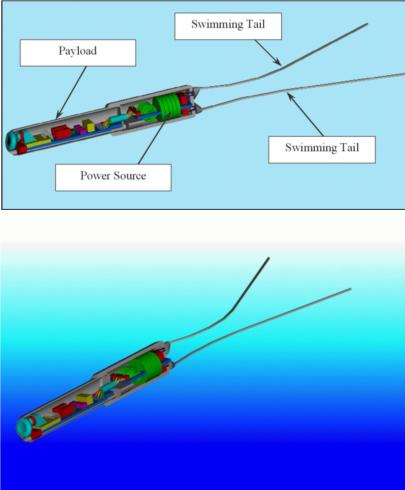The robot's swimming mechanism is specially adapted to the movement of a tiny body in water. When the swimming mechanism is connected to a tiny camera, it will be possible to reach a specific target area in the body and transmit images from there.

The researchers of the Faculty of Mechanical Engineering at the Technion managed to find a way to drive a tiny robot that would swim inside the human body. The robot's swimming mechanism is specially adapted to the movement of a tiny body in water. When the swimming mechanism is connected to a tiny camera, it will be possible to reach a specific target area in the body and transmit images from there.
The way to drive the robot, which is a significant breakthrough, was developed by a team led by Professor Moshe Shom from the Faculty of Mechanical Engineering (who had previously developed a robot that assists in back surgeries) as Gabor Kosha's doctoral thesis, and with the participation of Dr. Menasha Zaror from the Rambam Medical Center who recently joined the team The development was also mastered by Tzipi Neubach. The current development was carried out following a previous project called "MINUSC" as part of a consortium with the European Union whose goal is to build an endoscope with an optical fiber, which will enter the subarachnoid space in the spine.
"As part of the project, we developed a position sensor, which will find the place and depth of the endoscope's penetration into the spine and the angle of its roll," explains Gabi Kosha. "Now we are thinking about the endoscope of the next generation, which will swim by itself. It will be a swimming robot, with two actuators (sort of swimming tails), which will push it. He will have a power source, there will be a camera on his head and he will transmit the photographs to the doctor outside."
Solving the robot's swimming problem, which was done at the Technion, is an important step in the development of the entire robot. "This is a unique swimming mechanism that is adapted to small dimensions and because it is operated by piezoelectric crystals - its electricity consumption is very small", explain the Technion researchers. "In the future, we hope, the robot will also be able to do a biopsy and release drugs for local treatment."
The technical development was already presented at scientific conferences and aroused great interest. Researchers at the Faculty of Medicine at Harvard University are interested in using it. According to the researchers, several more years are needed to reach a complete product. "I believe that in the future there will be tiny robots that will stay in our bodies and will be able to navigate to problematic points," says Professor Shaham. "This is a step up in minimizing the invasion of the human body."
